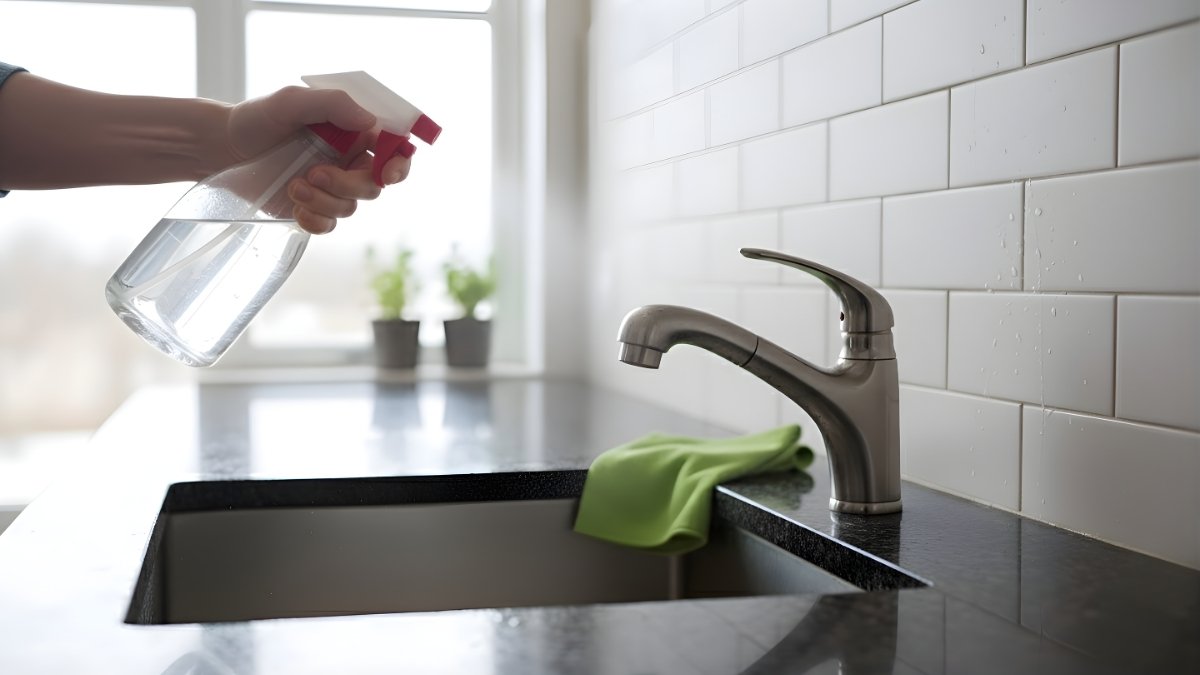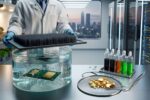If you’ve ever battled stubborn limescale on your taps, showerhead, or kettle, you know how frustrating it can be. Most commercial cleaners promise miracles, but they often leave streaks, smells, or residue behind.
Well, my grandma had a simple secret trick that removes limescale faster than anything I’ve ever bought and it costs almost nothing.
Let’s dive into how she did it, why it works, and how you can try it yourself today.
What Is Limescale
Limescale is that chalky white buildup you often see around faucets, kettles, or coffee machines. It’s mostly made of calcium carbonate, a byproduct of hard water.
Over time, limescale can clog appliances, slow down water flow, and even affect the taste of your drinks. That’s why removing it quickly and preventing it saves both money and frustration.
How My Grandma’s Limescale Trick Works – Explained Simply
My grandma’s secret ingredient? White vinegar.
It sounds too easy, but vinegar is naturally acidic, which makes it perfect for breaking down the alkaline minerals in limescale. The acetic acid in vinegar reacts with calcium carbonate, dissolving it without scrubbing or harsh chemicals.
Here’s her step-by-step method:
- Soak a cloth or paper towel in plain white vinegar.
- Wrap it tightly around the limescale-covered area (like a tap or showerhead).
- Leave it for 30–60 minutes or overnight for thicker buildup.
- Wipe away the residue with a damp cloth, then rinse with water.
If you’re working on a kettle or coffee machine, fill it halfway with vinegar and water, boil it once, then rinse thoroughly. The results are instant.
Why This DIY Trick Beats Store-Bought Cleaners
Commercial limescale removers can work fast, but they often come with strong chemicals, added costs, and unpleasant fumes.
Here’s a quick comparison:
| Method | Cost | Time Needed | Chemical-Free | Odor | Effectiveness |
|---|---|---|---|---|---|
| Grandma’s Vinegar Trick | Under $1 | 30–60 mins | Yes | Mild vinegar smell | Excellent |
| Store-Bought Cleaner | $4–$10 | 10–30 mins | No | Harsh chemical scent | Good |
| Lemon Juice | Around $1 | 1–2 hours | Yes | Fresh citrus scent | Moderate |
So not only does vinegar win on cost and simplicity it’s also eco-friendly and safe around kids and pets.
Common Mistakes With Limescale Removal
- Scrubbing too hard – This can scratch metal surfaces. Let the vinegar do the work instead.
- Not soaking long enough – Give it at least 30 minutes to dissolve buildup properly.
- Skipping the rinse – Always rinse with clean water to remove any leftover acid.
- Using the wrong vinegar – Avoid apple cider or flavored kinds; use plain white distilled vinegar.
A little patience and the right process make all the difference.
Best Tips to Keep Limescale Away for Good
Prevention is easier than deep cleaning. Here’s what Grandma recommended:
- Wipe down wet surfaces daily to stop mineral deposits from drying on them.
- Use a 50/50 vinegar-water spray weekly on taps and shower screens.
- If you have hard water, consider installing a small water softener or filter.
Doing these small steps regularly will keep your bathroom and kitchen sparkling with almost no effort.
Conclusion
Limescale doesn’t need fancy sprays or expensive cleaners. With nothing more than white vinegar and a little time, you can restore shine and freshness to your home just like my grandma did decades ago.
Simple, cheap, and effective sometimes the old ways really are the best.
FAQs
What causes limescale in the first place?
Limescale forms when hard water evaporates, leaving calcium and magnesium minerals behind on surfaces.
When should I use vinegar for cleaning limescale?
Use it as soon as you notice buildup the earlier you treat it, the easier it is to remove.
Why not use bleach instead?
Bleach disinfects but doesn’t dissolve minerals, so it won’t remove limescale effectively.
How often should I clean my kettle or showerhead?
Once every two to four weeks, depending on your water hardness and usage.
Can vinegar damage metal fixtures?
It’s safe for most surfaces, but avoid soaking chrome or aluminum for too long rinse well afterward.




